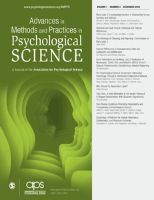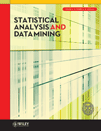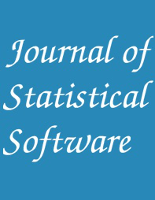
Scientific Data
Scope & Guideline
Catalyzing Innovation Through Interdisciplinary Data
Introduction
Aims and Scopes
- Data Sharing and Accessibility:
The journal promotes the sharing of datasets to enhance transparency and reproducibility in research. It encourages authors to make their datasets publicly accessible, thus enabling other researchers to build upon their work. - Interdisciplinary Research:
Scientific Data covers a wide range of disciplines, including environmental science, climate studies, biology, and social sciences. This interdisciplinary approach allows for a broader application of datasets across different fields. - Methodological Rigor:
The journal emphasizes the importance of methodological rigor in data collection and processing. Authors are encouraged to provide detailed descriptions of their methodologies to ensure that datasets can be reliably reproduced. - Focus on High-Resolution Data:
Many published datasets feature high-resolution data, which is crucial for detailed analyses in various scientific fields, particularly in environmental and ecological research. - Longitudinal and Temporal Data:
The journal frequently publishes datasets that span long time periods, allowing for the analysis of trends and changes over time, which is particularly relevant for climate and environmental studies.
Trending and Emerging
- Machine Learning and AI Applications:
There is a growing trend towards datasets that leverage machine learning and artificial intelligence for data analysis. This includes datasets designed for training models, indicating a shift towards more computationally intensive methodologies. - Environmental Monitoring and Climate Change:
Numerous recent publications focus on datasets related to environmental monitoring and climate change impacts. This reflects an increased urgency in addressing climate issues and the need for comprehensive data to inform policy and decision-making. - Integrative and Multiscale Datasets:
Emerging datasets often integrate multiple data types and scales, providing a more holistic view of complex systems. This trend supports interdisciplinary research and enhances the understanding of interactions within ecosystems. - Citizen Science and Crowdsourced Data:
The journal is increasingly publishing datasets collected through citizen science initiatives. This trend highlights the potential of engaging the public in scientific research and expanding data collection efforts. - Real-Time and Near-Real-Time Data:
Recent publications have emphasized datasets that provide real-time or near-real-time data, particularly in climate and environmental monitoring. This trend is crucial for timely decision-making and response to environmental changes.
Declining or Waning
- Traditional Climate Models:
There has been a noticeable decline in datasets exclusively focused on traditional climate models. As the field evolves, there is a shift towards more integrated approaches that combine observational data with advanced modeling techniques. - Static Datasets:
The journal has seen a decrease in the publication of static datasets that do not incorporate temporal changes. There is a growing preference for dynamic datasets that capture changes over time, reflecting the need for real-time data in various applications. - Limited Geographic Focus:
Earlier publications often included datasets focused on specific geographic regions. Recently, there is a trend towards global datasets that provide broader applicability, which may lead to a decline in region-specific studies. - Single-Parameter Datasets:
There is a waning interest in datasets that focus solely on a single parameter without considering the broader context or interactions with other variables. Researchers are increasingly looking for multi-parameter datasets that offer comprehensive insights.
Similar Journals

Advances in Methods and Practices in Psychological Science
Innovative Methods for a New Era in Psychological Research.Advances in Methods and Practices in Psychological Science is an esteemed journal dedicated to the advancement of innovative methodologies and practices within the field of psychology. Published by SAGE Publications Inc, this journal offers a prominent platform for researchers, professionals, and students to explore and disseminate significant contributions to psychological methods, emphasizing contemporary practices that improve research quality and applicability. With an impressive impact factor reflected by its Q1 quartile ranking in the field and a prestigious Scopus rank of #5 out of 216, positioning it in the top 3% of journals in general psychology, this journal stands as a critical resource for anyone engaged in psychological research. Operating within the open access framework, it ensures that cutting-edge findings are readily available to a global audience, thereby fostering collaboration and discussion. With a publication timeline spanning from 2018 to 2024, it continues to be at the forefront of psychological scholarship, championing the use of modern techniques and practices that reflect the evolving landscape of the discipline.

Methods Data Analyses
Unlocking Innovative Methodologies for TomorrowMethods Data Analyses is a premier open-access journal published by GESIS Leibniz Institute for the Social Sciences, based in Germany. With its focus on advanced methodologies within various fields such as Applied Mathematics, Applied Psychology, Computer Science Applications, and Statistics, this journal plays a pivotal role in disseminating innovative research and practical applications that push the boundaries of quantitative analysis. As of 2023, it proudly holds Q1 status in both Applied Mathematics and Modeling and Simulation, reflecting its high impact and relevance in these disciplines. The journal is committed to promoting open access research since 2013, ensuring that critical methodologies and findings are available to a global audience. With Scopus rankings indicating robust standing across multiple categories, including Statistics and Decision Sciences, Methods Data Analyses stands as an essential resource for researchers, professionals, and students seeking to engage with cutting-edge approaches and frameworks that enhance analytical rigor in their work.

BMC Research Notes
Unlocking Insights in Biochemistry and BeyondBMC Research Notes, published by SPRINGERNATURE, is a leading open-access journal dedicated to the dissemination of research notes across various disciplines, particularly within the fields of biochemistry, genetics, molecular biology, and medicine. Since its establishment in 2008, the journal has embraced a mission to facilitate the rapid publication of short, concise articles that contribute significantly to ongoing scientific dialogues. With an impact factor reflective of its reputation, BMC Research Notes ranks Q2 in Biochemistry, Genetics and Molecular Biology and holds a commendable Q3 classification in Medicine for 2023. Notably, the journal's Scopus rankings highlight its prominence, especially in General Medicine, where it stands in the 77th percentile. Situated in the United Kingdom, the journal prioritizes open access to foster transparency and engagement with a global audience, making it an essential resource for researchers, practitioners, and students who are looking to stay abreast of new findings and practical advancements within their fields. The journal continues to span evolving research themes from 2008 to 2024, ensuring a dynamic repository of knowledge in the rapidly advancing landscape of biomedical research.

Communications for Statistical Applications and Methods
Bridging Theory and Practice in Statistical MethodologiesCommunications for Statistical Applications and Methods is a vital academic journal dedicated to advancing the field of statistics, with a particular focus on practical applications and methodologies. Published by the Korean Statistical Society, this journal has become a significant resource for researchers, practitioners, and students engaged in statistical sciences and its diverse applications in various fields including finance and modeling. Operating without an Open Access format, the journal is accessible through institutional subscriptions, allowing a broad audience to benefit from its insights. The journal covers works from its inception in 2017 to 2024, and although it currently ranks in the Q4 and Q3 quartiles across various mathematical and statistical categories, its commitment to quality research makes it a noteworthy platform for emerging trends and innovations. The journal not only serves to disseminate knowledge but also fosters collaboration among statisticians, ensuring that crucial advancements in statistical applications are communicated effectively.

Behavior Research Methods
Exploring groundbreaking approaches to understanding behavior.Behavior Research Methods is a premier, peer-reviewed journal published by Springer that holds a significant position within the fields of psychology and behavioral science. With its ISSN 1554-351X and E-ISSN 1554-3528, this esteemed journal has been a vital resource for researchers and practitioners since its inception in 1968. By providing insightful research on innovative methodologies in behavioral studies, it has achieved remarkable recognition, consistently ranking in the Q1 category across various psychological disciplines including Developmental and Educational Psychology, Experimental and Cognitive Psychology, and Arts and Humanities. Its current Scopus rankings place it firmly within the top echelons of academic journals, with impressive percentiles in several categories. The journal's objective is to advance knowledge and foster discourse on effective research methods related to human behavior, making it an essential platform for sharing groundbreaking findings and innovative approaches. While it does not offer open access, it continues to serve as a key reference for those looking to enhance their understanding of methodological advancements in behavior research. The journal is available to scholars and institutions both in the United States and globally, affirming its role as a beacon of scholarly excellence in psychology.

Stats, published by MDPI, serves as an invaluable open access platform dedicated to the fields of statistics and probability. Since its inception in 2018, the journal has been committed to disseminating high-quality research and promoting innovation in statistical methodologies through a rigorous peer-review process. Operating from Basel, Switzerland, Stats offers a global reach and aims to foster collaboration among researchers, professionals, and graduate students alike. With an impact factor indicating its emerging significance, the journal resides in the Q4 quartile of the statistics and probability category for 2023 according to Scopus rankings. This positions it within the evolving landscape of statistical research, enhancing its visibility and accessibility. Researchers are encouraged to contribute to this dynamic field and benefit from the journal's dedication to open access publishing, ensuring that research findings can reach a broad audience without barriers.

Big Data Mining and Analytics
Pioneering Research in Data-Driven SolutionsBig Data Mining and Analytics, published by TSINGHUA UNIVERSITY PRESS, stands at the forefront of interdisciplinary research in the fields of Artificial Intelligence, Computer Networks and Communications, Computer Science Applications, and Information Systems. With an impressive Q1 ranking in multiple categories as of 2023, this journal serves as a critical platform for researchers and professionals eager to explore innovative techniques and methodologies related to big data analytics. Since its transition to Open Access in 2018, Big Data Mining and Analytics has aimed to increase the visibility and accessibility of its cutting-edge research, making permanent strides in the global academic landscape. Housed in Beijing, China, and actively embracing the converged years from 2018 to 2024, the journal aims to cultivate a rich discourse on emerging trends and applications, ensuring its relevance in a rapidly evolving technological environment. Join a vibrant community of scholars dedicated to advancing the frontiers of knowledge in big data.

Statistical Analysis and Data Mining
Transforming Data into Actionable InsightsStatistical Analysis and Data Mining is a leading journal published by WILEY, dedicated to exploring the latest advancements in statistical methods and data mining techniques. With an ISSN of 1932-1864 and an E-ISSN of 1932-1872, this journal serves as a significant platform for researchers and professionals in statistical analysis, computer science applications, and information systems. Covering a wide range of topics from innovative analytical methodologies to emerging data mining algorithms, the journal aims to disseminate high-quality research that contributes to the evolving landscape of data science. Ranked in the Q2 category for the fields of Analysis, Computer Science Applications, and Information Systems in 2023, it emphasizes its relevance and impact within academia. While it offers limited Open Access options, the insights shared in this publication are integral for those wishing to stay ahead in fast-paced research and data-driven industries. Since its inception in 2008 and continuing through 2024, Statistical Analysis and Data Mining invites submissions that reflect rigorous empirical research coupled with practical implications, making it a vital resource for the academic community.

Data
Empowering research in Computer Science and Information Systems.Data is an innovative open-access journal published by MDPI, dedicated to advancing research and knowledge in the fields of Computer Science and Information Systems. Since its inception in 2016, Data has positioned itself as a prominent platform for disseminating high-quality research, currently boasting an impact factor reflective of its rigorous peer-review process and academic standards. Situated in Switzerland, the journal encompasses a broad scope of topics, making it an essential resource for researchers, professionals, and students alike. With a notable standing in multiple categories—including Q2 rankings in Information Systems and Information Systems and Management—the journal facilitates access to cutting-edge findings and methodologies that drive innovation in data management and analysis. Scholars are encouraged to utilize this open-access platform to share their findings and contribute to the collective understanding in these rapidly evolving fields.

Journal of Statistical Software
Advancing statistical innovation for a data-driven world.Journal of Statistical Software, published by the esteemed Journal Statistical Software, stands as a premier platform for the dissemination of cutting-edge research in the fields of statistical software development, methodologies, and applications. With an impressive impact factor and consistently ranking in the Q1 quartile for Software, Statistics and Probability, and Statistics, Probability and Uncertainty as of 2023, this journal is recognized globally for its scholarly contributions and innovative content. The journal has been an Open Access publication since 1996, facilitating unrestricted access to high-quality research for a diverse audience, including researchers, professionals, and students. As the journal converges into its 28th volume in 2024, it continues to maintain a strong presence in key academic rankings—evidenced by its stellar Scopus rank, where it is placed in the top 5% of journals in its field. Located at UCLA Department of Statistics, in Los Angeles, this journal is dedicated to fostering the advancement of statistical software and its role in enhancing scientific research across multiple disciplines.